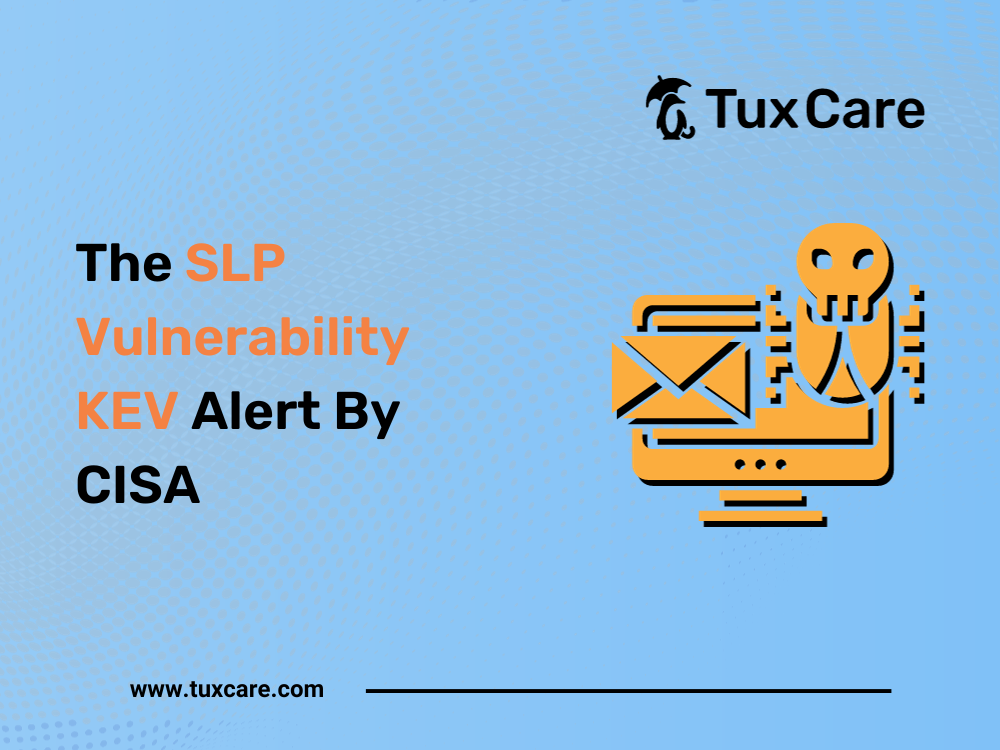The SLP Vulnerability KEV Alert By CISA
The U.S. Cybersecurity and Infrastructure Security Agency (CISA) issued a notable update incorporating a high-severity vulnerability in the Service Location Protocol (SLP) into its Known Exploited Vulnerabilities (KEV) catalog. This decision stems from the agency’s identification of active exploitation, emphasizing the critical need for organizations to take swift action against the SLP vulnerability KEV.
Unveiling SLP Vulnerability KEV Alert
The Security Layer Protocol (SLP) flaw, officially tagged as CVE-2023-29552 and assigned a CVSS score of 7.5, revolves around a significant flaw in the Service Location Protocol. This flaw is recognized as a potential avenue for launching impactful denial-of-service (DoS) amplification attacks, with the potential for severe consequences.
Origin and Disclosure
Bitsight and Curesec brought this high-severity security risk in SLP to light in April of this year. According to CISA, the vulnerability exposes a DoS flaw, enabling an unauthenticated, remote attacker to exploit it by registering services and utilizing falsified UDP traffic for a potent DoS attack.
Understanding the Service Location Protocol
SLP serves as a critical protocol facilitating communication between systems within a local area network (LAN). Its primary function is to enable the discovery of other systems within the network, fostering seamless communication.
The Threat Landscape: Amplification Factor
While specific details surrounding the KEV security update remain undisclosed, Bitsight has cautioned that the vulnerability could be weaponized to orchestrate DoS attacks with a substantial amplification factor. This heightened amplification factor could empower even under-resourced threat actors to significantly impact targeted networks and servers through reflection DoS amplification attacks.
KEV Vulnerability Mitigation
Recognizing the real-world implications of potential attacks leveraging this KEV software vulnerability, federal agencies face a stringent deadline. By November 29, 2023, they are mandated to implement essential mitigations, including the disabling of the SLP service on systems operating in untrusted network environments. This proactive measure aims to fortify networks against potential threats emanating from the identified vulnerability.
Strategic Implications: Navigating the Threat Landscape
In light of this development, organizations are urged to adopt a proactive stance in fortifying their networks against potential threats. Understanding the nature of the SLP vulnerability in cybersecurity is paramount, and adopting the recommended mitigations becomes a strategic imperative.
CISA Threat Update
The urgency conveyed by CISA cybersecurity advisory underscores the severity of the identified vulnerability. Organizations must prioritize the implementation of necessary security measures, aligning with the stipulated guidelines to mitigate the risk of exploitation.
Conclusion
As the digital landscape evolves, so do the threats that permeate it. The recent inclusion of the CISA high-severity vulnerability in the KEV catalog serves as a stark reminder of the ever-present need for critical cybersecurity measures. By understanding the nature of the critical vulnerability in KEV, organizations can take informed actions to fortify their defenses, ensuring the resilience of their networks in the face of evolving cybersecurity challenges.
The sources for this piece include articles in The Hacker News and Vulnera.



 Documentation
Documentation Login
Login




